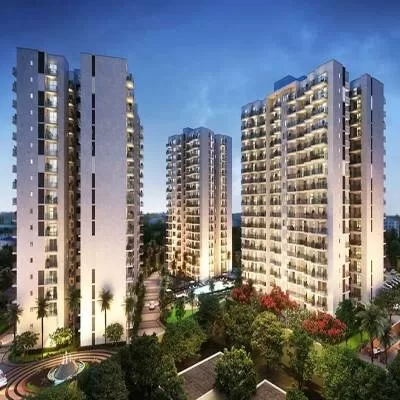- Home
- Real Estate
- Sand Storm
Sand Storm
This is what being sandbagged must feel like! Considering that sand is a component crucial to construction-related work, it is not surprising that the construction industry continues to reel from the sand ban imposed by the government in late 2010. At the time, Sunil Mantri, Chairman, Sunil Mantri Group, had warned, “The total sand consumption in Maharashtra is 65.55 million tonne. If construction work grinds to a halt, the country’s economy will feel the impact.” So how has the industry coped?
The impact
Paras Gundecha, President, Maharashtra Chamber of Housing Industry (MCHI), is quick to respond: “If a builder requires 10 trucks of sand every day at his construction site but gets just two, his project activities will naturally suffer, leading to delays.”
“Sand mining or sand dredging was banned across the country owing to environmental reasons,” acknowledges Boman R Irani, Chairman & Managing Director, Keystone Realtors Pvt Ltd (Rustomjee). “There is a larger study that shows that sand dredging is important. The problem is that out of 250 basins, sand was dredged only from certain basins as per convenie-nce. This was wrong.”
“I do not deny that wrongdoing may have occurred,” says Satish Parakh, Managing Director, Ashoka Buildcon. “But, there has to be a procedural approach towards the whole issue. The government’s erratic policies that keep interfering with the mining industry do not have clear-cut guidelines. All our tenders are based on current cost. Such decisions like the sand ban escalate the cost; a shortage is created and ultimately projects delayed.” In South India, the rivers are not perennial; hence, availability of sand varies through the year. “Although the sand ban has been lifted, it is still regulated by the Coastal Regulation Zone,” shares Bengaluru-based MR Jaishankar, Chairman & Managing Director, Brigade Group. “Hence, lifting the ban has not provided much of a respite. Periodic disruptions in availability has delayed our projects and caused severe financial stress on our margin.”
Himanshu Vakharia, Vice President (Contracts and Procurement), New Consolidated Construction Company, echoes this concern, saying, “In the past year, the cost of sand has gone up almost 70-80 per cent.” Jaishankar adds, “The increase in cost of sand over the past three years has made an impact of a minimum of Rs 5 to Rs 7 per sq ft on our cost of construction.”
Time for action
The sand policy of 2011 in Karnataka permits the use of mechanised boats and earthmovers in sand extraction. But, the use of earthmovers and dredgers in coastal areas is prohibited. As Jaishankar suggests, “River sand mining can be regulated based on
availability. Policymakers should incentivise the establishment of units to provide sand with one-time grants and raw material linkages through long-term quarry leases.” The industry believes that the government must offer more clarity as far as dozing and environment policy and price control regulation is concerned. Further, it recommends that the government elucidate what quantum can be drawn from which quarries or which river beds can be exploited.
Alternate materials
‘Manufactured sand’ is also being increasingly discussed as a viable alternative. “The solution is to go in for 100-per-cent manufactured sand, also known as VSI sand, made by crushing rocks and stones,” says Vakharia. This sand can be manufactured where there are rocks and transported to site. As for the quality, Jaishankar says, “It is consistent. Although it cannot be compared to natural sand, we have to reconcile our construction practices to the new scenario.”
Nevertheless, Parakh points out, “For all the finishing items and plastering work in a building, natural sand is required. Its use can be reduced but not comp-letely stopped.” At this, Vakharia is prompt in offering yet another alternative. “Today, companies are intro-ducing readymade plaster,” he informs us. “It’s made of coarse sand and serves as a good alternative for plast-ering purposes.” For his part, Jaishakar has another option. “Premixed plastering cement at competitive prices is a viable alternative. Policymakers must incentivise such products to bring down the pressure on natural sand.”
What lies beneath?
Whatever the alternates, it is clear that the availability of natural sand will remain a contentious topic between the construction industry and the government. In fact, MCHI and Builders’ Association of India (BAI) have jointly commissioned a study by IIT that is expected to identify that it is important to continue dredging sand – to acceptable levels. However, what remains to be revealed is the government’s own journal, and the study that led to the original sand ban!
The ban on sand dredging has had a significant impact on building activity and forced the construction industry to hunt for viable alternatives, discovers Shriyal SetmadhavanThis is what being sandbagged must feel like! Considering that sand is a component crucial to construction-related work, it is not surprising that the construction industry continues to reel from the sand ban imposed by the government in late 2010. At the time, Sunil Mantri, Chairman, Sunil Mantri Group, had warned, “The total sand consumption in Maharashtra is 65.55 million tonne. If construction work grinds to a halt, the country’s economy will feel the impact.” So how has the industry coped? The impactParas Gundecha, President, Maharashtra Chamber of Housing Industry (MCHI), is quick to respond: “If a builder requires 10 trucks of sand every day at his construction site but gets just two, his project activities will naturally suffer, leading to delays.” “Sand mining or sand dredging was banned across the country owing to environmental reasons,” acknowledges Boman R Irani, Chairman & Managing Director, Keystone Realtors Pvt Ltd (Rustomjee). “There is a larger study that shows that sand dredging is important. The problem is that out of 250 basins, sand was dredged only from certain basins as per convenie-nce. This was wrong.” “I do not deny that wrongdoing may have occurred,” says Satish Parakh, Managing Director, Ashoka Buildcon. “But, there has to be a procedural approach towards the whole issue. The government’s erratic policies that keep interfering with the mining industry do not have clear-cut guidelines. All our tenders are based on current cost. Such decisions like the sand ban escalate the cost; a shortage is created and ultimately projects delayed.” In South India, the rivers are not perennial; hence, availability of sand varies through the year. “Although the sand ban has been lifted, it is still regulated by the Coastal Regulation Zone,” shares Bengaluru-based MR Jaishankar, Chairman & Managing Director, Brigade Group. “Hence, lifting the ban has not provided much of a respite. Periodic disruptions in availability has delayed our projects and caused severe financial stress on our margin.” Himanshu Vakharia, Vice President (Contracts and Procurement), New Consolidated Construction Company, echoes this concern, saying, “In the past year, the cost of sand has gone up almost 70-80 per cent.” Jaishankar adds, “The increase in cost of sand over the past three years has made an impact of a minimum of Rs 5 to Rs 7 per sq ft on our cost of construction.” Time for actionThe sand policy of 2011 in Karnataka permits the use of mechanised boats and earthmovers in sand extraction. But, the use of earthmovers and dredgers in coastal areas is prohibited. As Jaishankar suggests, “River sand mining can be regulated based on availability. Policymakers should incentivise the establishment of units to provide sand with one-time grants and raw material linkages through long-term quarry leases.” The industry believes that the government must offer more clarity as far as dozing and environment policy and price control regulation is concerned. Further, it recommends that the government elucidate what quantum can be drawn from which quarries or which river beds can be exploited.Alternate materials‘Manufactured sand’ is also being increasingly discussed as a viable alternative. “The solution is to go in for 100-per-cent manufactured sand, also known as VSI sand, made by crushing rocks and stones,” says Vakharia. This sand can be manufactured where there are rocks and transported to site. As for the quality, Jaishankar says, “It is consistent. Although it cannot be compared to natural sand, we have to reconcile our construction practices to the new scenario.” Nevertheless, Parakh points out, “For all the finishing items and plastering work in a building, natural sand is required. Its use can be reduced but not comp-letely stopped.” At this, Vakharia is prompt in offering yet another alternative. “Today, companies are intro-ducing readymade plaster,” he informs us. “It’s made of coarse sand and serves as a good alternative for plast-ering purposes.” For his part, Jaishakar has another option. “Premixed plastering cement at competitive prices is a viable alternative. Policymakers must incentivise such products to bring down the pressure on natural sand.”What lies beneath?Whatever the alternates, it is clear that the availability of natural sand will remain a contentious topic between the construction industry and the government. In fact, MCHI and Builders’ Association of India (BAI) have jointly commissioned a study by IIT that is expected to identify that it is important to continue dredging sand – to acceptable levels. However, what remains to be revealed is the government’s own journal, and the study that led to the original sand ban!




















